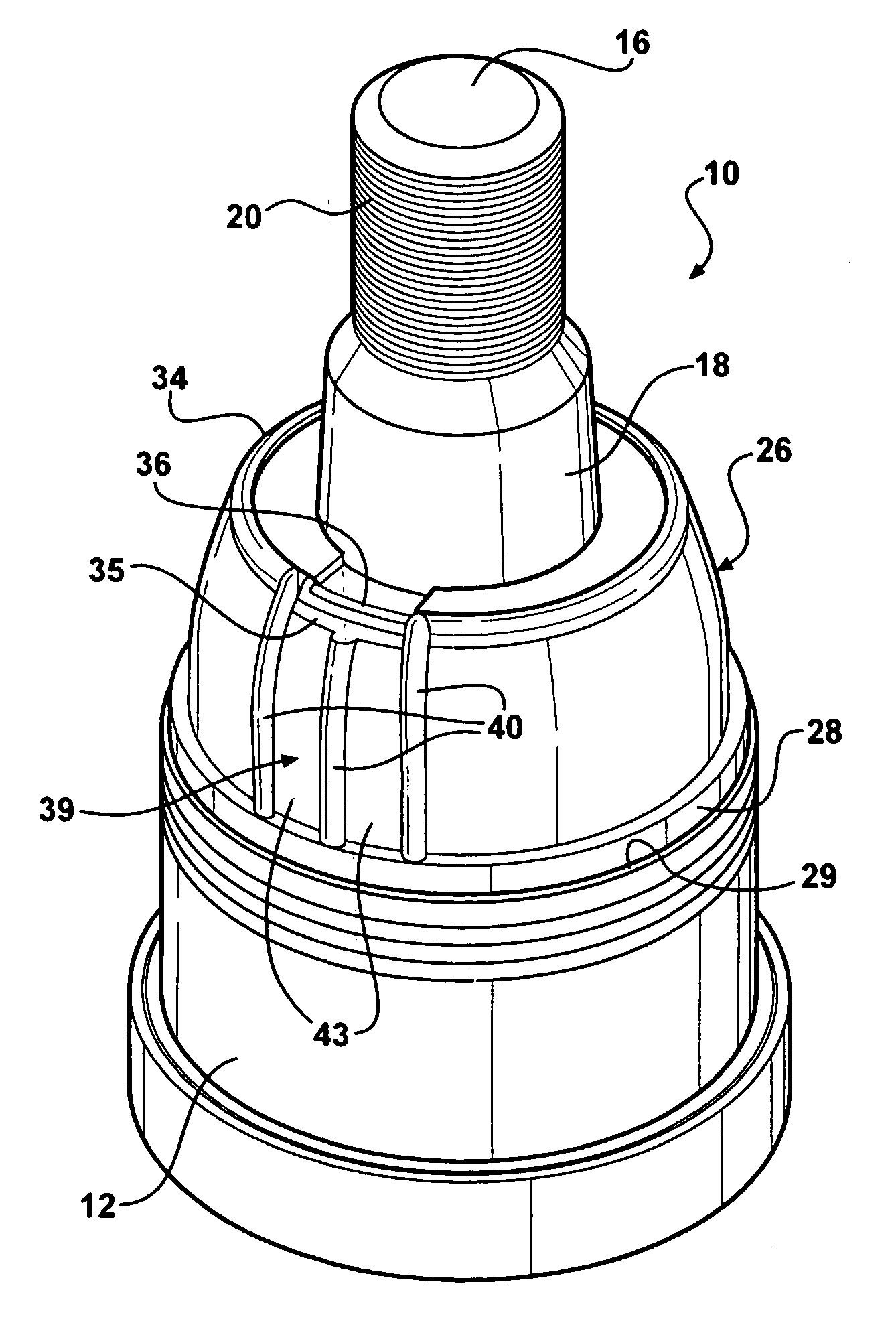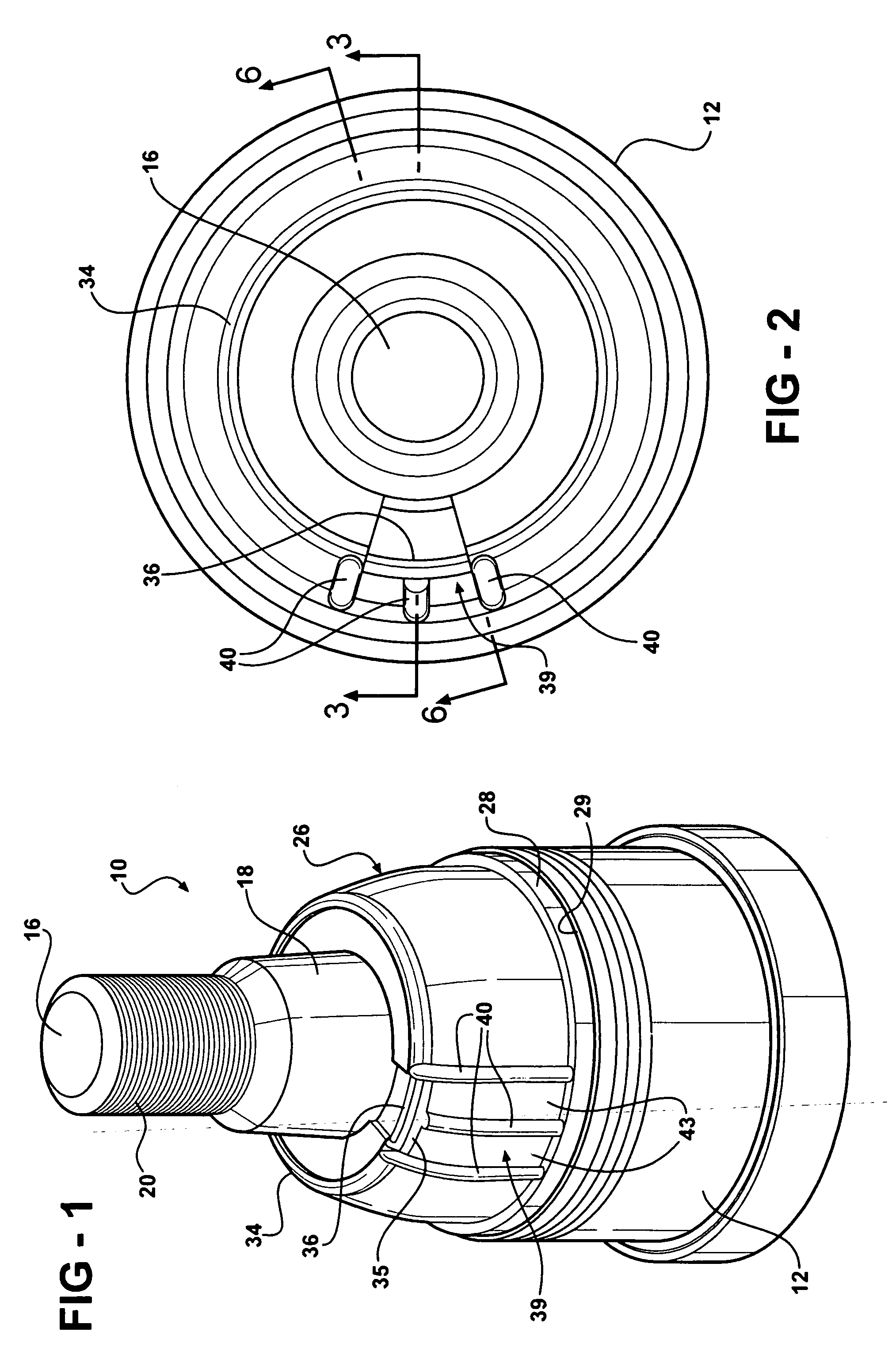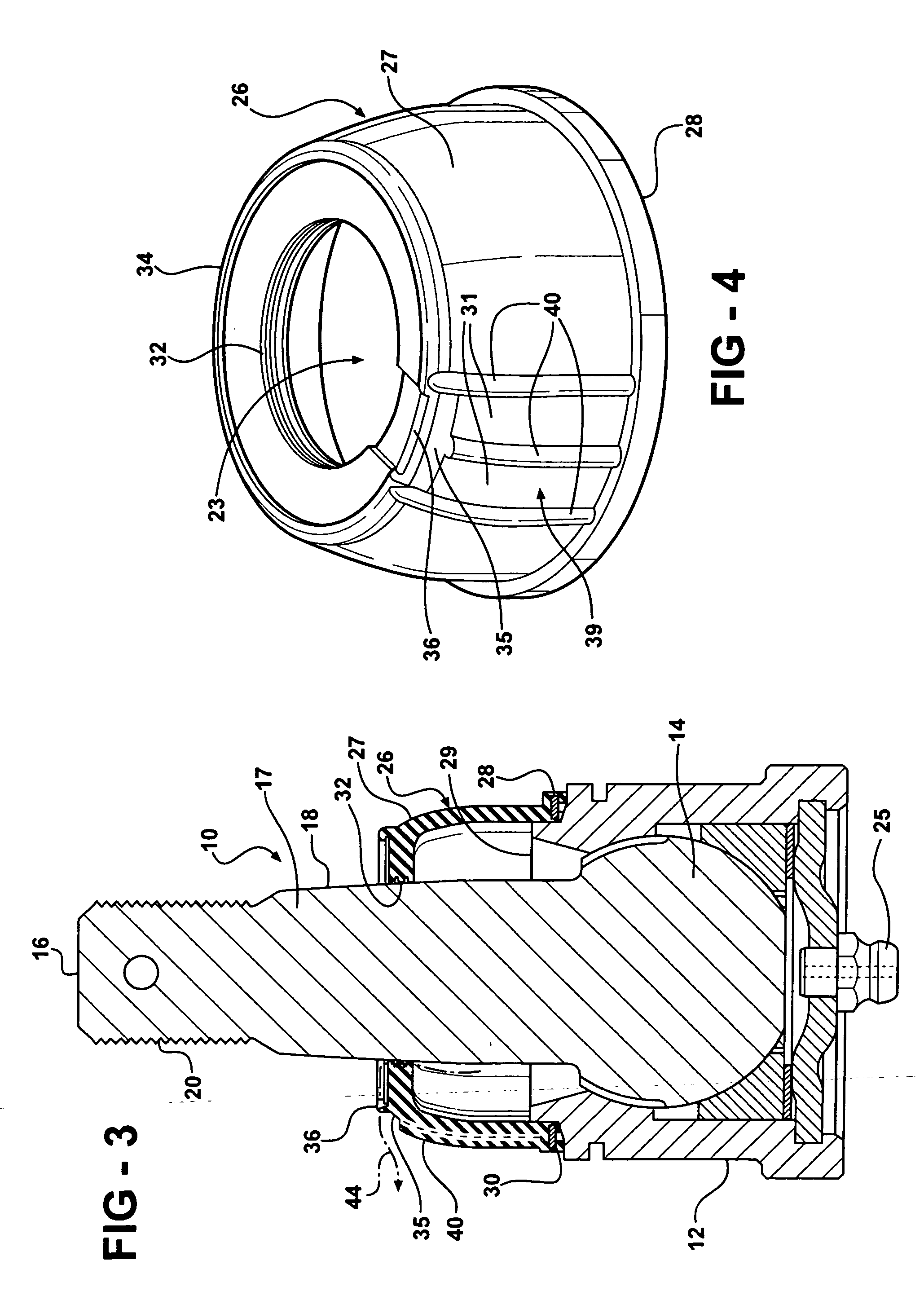Dust boot with grease relief passage
- Summary
- Abstract
- Description
- Claims
- Application Information
AI Technical Summary
Benefits of technology
Problems solved by technology
Method used
Image
Examples
Embodiment Construction
[0021] A typical ball joint assembly is generally shown at 10 in FIGS. 1, 2, 3, 6, 7 and 8, and in an alternate arrangement in FIG. 9. The ball joint assembly 10 includes a cup-like housing 12, preferably formed from a metal such as steel, in which is captured the articulating ball portion 14 of a ball stud 16, also preferably formed from a metal such as steel. The ball stud 16 also includes a shank portion 17 that extends integrally from the ball portion 14, outwardly from the housing 12. The shank portion 17 has a tapered connection surface 18 and a threaded end 20. As shown in FIGS. 7 and 8, a control arm 22 may be joined to the tapered connecting surface 18 of ball joint assembly 10 and secured into position via nut 24. Instead of the depicted control arm 22, another anchoring feature such as a knuckle, spindle, link or frame or other chassis component may be used. The joint is adapted to receive grease or other lubricant through grease fitting 25
[0022] Referring to FIGS. 4 and ...
PUM
 Login to View More
Login to View More Abstract
Description
Claims
Application Information
 Login to View More
Login to View More - R&D
- Intellectual Property
- Life Sciences
- Materials
- Tech Scout
- Unparalleled Data Quality
- Higher Quality Content
- 60% Fewer Hallucinations
Browse by: Latest US Patents, China's latest patents, Technical Efficacy Thesaurus, Application Domain, Technology Topic, Popular Technical Reports.
© 2025 PatSnap. All rights reserved.Legal|Privacy policy|Modern Slavery Act Transparency Statement|Sitemap|About US| Contact US: help@patsnap.com



